The Baptist System of Representative Convention Governance Can Only Work if Churches Come to the Annual Meeting
The beating Baptist heart of our SBC polity is its representative form of government. We could not conduct orderly business if all 14 million Southern Baptists were to attend the Annual Meeting. To avoid that logistical nightmare, we operate on a system of messengers representing their respective churches. Therein lies the genius. Conceivably, each and every SBC church (that gives to the Cooperative Program or any of our SBC entities, of course) can have a voice speaking on their behalf at the Annual Meeting.
But what happens if those churches don’t show up?
Baptist Press recently released the statistics for the 2025 Annual Meeting in Dallas. The Southern Baptist Convention comprises approximately 47,000 churches, yet fewer than 4,000 churches were represented by messengers at the Annual Meeting. The precise number of churches represented in Dallas was 3,899. This was slightly lower than the 2024 gathering in Indianapolis, which saw 3,988 churches represented.
This means that for two consecutive Annual Meetings, fewer than 4,000 churches out of nearly 47,000 sent any messengers. By rough math, that means only 8.5% of the entire Southern Baptist Convention is conducting business on behalf of the other 91.5%. In other words, on average, one out of ten Baptists is making consequential decisions that will impact the future and fidelity of the SBC for the other nine.
That is a significant problem and only further contributes to the growing issues at hand in SBC. We have become a denomination without representation.
So, Who Is Showing Up?
At the Small Church Pastor’s luncheon hosted by NAMB, a statistic was published showing that 88% of our SBC churches have less than 200 in attendance (among reporting churches). Just drive around your town and you’ll find that to be the reality. That means that of our roughly 47,000 churches, around 41,000 have less than 200 in attendance. Praise God for those churches. My church would fit that bill. Actually, we would fit the 71% with less than 100 in attendance.
This is not an argument that smaller is always better or a sign of faithfulness. This, however, is a reminder that the vast majority of churches in our convention are typical. They are your everyday Baptist church. They are my church.
And yet, they are vastly underrepresented at the Annual Meeting.
As stated, less than 10% of Southern Baptist Churches sent messengers to the Annual Meeting. This is one reason why I have been calling small churches to prioritize the Annual Meeting, as I wrote in an article for CBL last year. Another reason, which became especially clear to me at this year’s meeting, is that our churches are losing their voice. People in the SBC have long lamented the platform. The platform represents the system. Increasingly, it appears that the platform and the average SBC church have different points of emphasis, and in some cases, different convictions altogether.
Unfortunately, the average SBC church is not represented by even one messenger at the Annual Meeting. For many of these average-sized churches, neither their pastor nor any members of their church are making the trip.
So, who is showing up at the Annual Meeting? This is somewhat anecdotal, but I think it’s a fair deduction: the exceptional SBC churches are the ones that show up and make decisions for the rest of us. The 12% of SBC churches, with more than 200 members (sometimes more than 2,000), are certainly making their presence felt at the Annual Meeting and having their voices heard on other aspects of denominational life. And their voice is growing.
Not only are they securing important positions of denominational leadership, but their emphases and convictions are also being expressed more and more from the platform. These are not all bad actors, certainly. However, the “mega churches” in the SBC appear to have an increasingly divergent understanding of what historic Baptist polity and ecclesiology are and should be.
But whatever they are, they are in the right place at the right time. Namely, they show up at the right place (the Annual Meeting) at the stated time (the second week in June).
What has resulted from this trend is an increasingly marginalized majority in SBC life.
The Marginalized Majority
Given this trend, I believe it is again fair to suggest that the interests of the “average SBC church” are being pushed to the margins. I was a part of several group chats during the Annual Meeting this year, which lamented different positions and plans presented by the platform. Much of this stemmed from a place of emphasis, while some arose from significant differences in conviction.
Take the Law-Sanchez Amendment as an example. Were we to get all 47,000 SBC churches to report their convictions regarding all the arguments about female pastors, the office of pastor, and so on, I believe we’d find an overwhelming majority in favor of the Law-Sanchez Amendment. However, at the Annual Meeting, the Amendment only received a 60% vote in favor. However, I would wager a guess that if each of our 47,000 churches submitted a single vote on the Amendment, it would result in a victory of approximately 80% to 20% in favor of adoption.
The point? Power belongs to those who show up. If you want to win votes, it’s not ultimately about having better arguments; it’s about having better numbers.
The good news is that even at the Annual Meeting, where the majority of SBC churches are not represented, their convictions still carry the majority. But there are a host of other issues the average SBC church would have positions on, which are pushed to the margins. Church planting, missionary funding, and the actions of the ERLC—these are all topics my friends and I were discussing during the Annual Meeting. Time and time again, the feeling was that our interests were not represented. And this is resulting in the majority siloing themselves off into affinity groups.
Disaffected Affinities
Affinity groups, ministries, networks, and factions are growing in our Convention. I am part of such para-convention ministries. I am grateful to know I have like-minded brothers in arms. And yet, those group chats (often born from such affinity ministries) have a recurring tone of retreat away from Convention life and further into the affinity group. Not many expressed a desire to leave the SBC entirely. Still, however, that majority is feeling marginalized for various reasons and finding like-minded groups where their interests are represented.
Praise God for such groups. I enjoyed my seminary luncheon on Wednesday afternoon, as well as different church network events throughout the week, the CBL event on Tuesday night, and spent time with friends at the exhibitors’ booths.
However, the marginalized majority should not willingly marginalize themselves from the Convention by retreating solely to the comfort of their friends. We need to engage with those who hold different perspectives and seek to win them over to our side, which we believe is the side that advocates for a doctrinally faithful, baptistic, Southern Baptist Convention.
Neither should the faithful majority marginalize themselves by showing up to the Annual Meeting every year but not speaking up. This likewise applies to your local association and state convention. The way forward is through.
The Only Way Out Is Through
“The only way out is through.” This quote is often attributed to the poet Robert Frost. However, the precise line from his 1915 poem “A Servant to Servants” is actually “the best way out is always through.”
Either way, this is our prescription as the majority of Southern Baptists. The future of our Convention hangs on our willingness to show up and speak up. The best way out is always through; in this case, through coming to our Annual Meeting and representing our churches. We will not fix anything by avoiding the business of the Annual Meeting.
Furthermore, nothing will be fixed if we only show up and engage with fellow members of our group chats. I’m preaching to myself here. I’m not naturally inclined to speak up at a microphone at the Annual Meeting. But kudos to those who do, and there we see the lesson. We must be willing to embrace the awkwardness of speaking in front of 10,000 people, making a motion out of turn, or asking a question at the wrong time. The only way out is through.
We must prioritize coming to the Annual Meeting. We pastors of the 88% need to teach our churches the importance of the Annual Meeting. Before you say you can’t afford it, brother, I pastor a church of less than 100 members. And for less than $1,000, your church can send your pastor to the Annual Meeting. I know, because I just did it. My flights, hotel, and meals all totaled around $600. Our church was able to fund me and another messenger from my church. In total, both of us cost our church less than $1,000. You can do it, you just have to make it a priority.
Start leading your church to set aside a few dollars here and there to represent your church at the Annual Meeting in Orlando next year. Plan to come, and come prepared. Be willing to both show up and speak out. Of course, that doesn’t necessarily mean at the microphone, but it might. It might also mean raising your ballot even when everyone else in your immediate vicinity is voting the opposite of you. Embrace the awkward. The only way forward is through.
Breaking the Cycle
There is a certain cycle to this problem. The majority of SBC churches don’t make their voice heard. They are then marginalized, retreat into the margins, and continue to lose their voice.
Faithful Southern Baptists, we must break the cycle. If we wish to have representation in our denomination, we must take responsibility for attending, speaking up, and being present at the Annual Meeting of the Southern Baptist Convention. Jonathan Howe gave a similar exhortation in his recap of Dallas and preview of Orlando, and it’s a good one.
He said:
“As we look ahead to SBC26 in Orlando, I want to share a personal hope: I’d love to see 5,000 churches represented.
Not 5,000 people from a few dozen churches, but 5,000 churches. Because the strength of our Convention is not in how many people one church sends – it’s in how many churches take part. We need more perspectives, more voices, more engagement. Whether your church sends one messenger or 12, your church’s voice matters. Your church’s presence matters.
So start planning now. Budget for it. Make it a priority. Let’s make Orlando a landmark gathering.”
Amen. Let’s make it a landmark gathering, both in terms of attendance and business accomplished, to address the fundamental issues that need reform in the SBC. Which means it’s not too early to start planning your trip to Orlando.
In fact, now might be the most opportune time to do so.
-

Alan Patrick is the Senior Pastor at Glenrock Baptist Church in Fort Mill, South Carolina. He holds a B.A. in Pastoral Ministry from Southeastern Baptist Theological Seminary and is currently working on his M.Div. at SEBTS as well. He is married to his wife, Haley, and has one son. Alan enjoys reading, writing, being outdoors, and all things Clemson. He has written for organizations such as 9Marks and the Center for Faith and Culture and is the author of Faithful Pulpit Supply. For more information, visit Alan’s website: http://jalanpatrick.com

